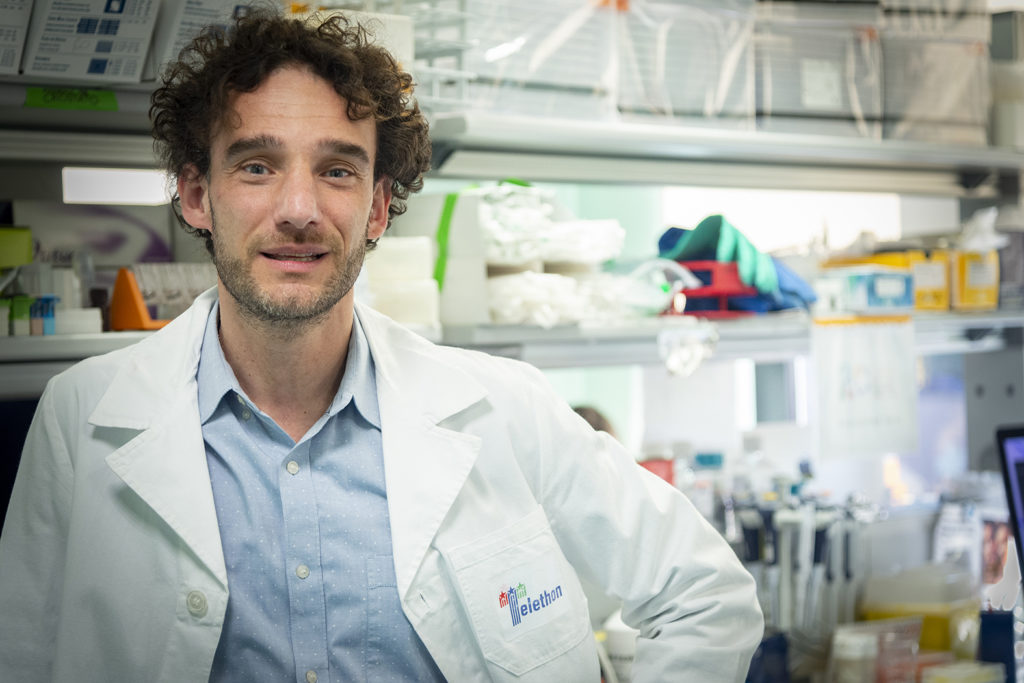An important contribution to the elucidation of the mechanisms through which blood stem cells arise during embryonic life from a study conducted by the San Raffaele Telethon Institute for Gene Therapy.

Blood stem cell transplantation is the most long-standing example of regenerative medicine, meaning that it is able to promote the formation of healthy tissues in case of disease. The first blood stem cell transplantation procedure was performed in 1957 and today this is the standard treatment for many tumors and rare genetic diseases. Nowadays, thanks to genetic engineering, we are able to modify the genetic material of these cells to cure different genetic blood diseases, immune system or metabolic disorders. The San Raffaele Telethon Institute for Gene Therapy is one of the reference centers worldwide for stem cell gene therapy: here researchers have shown how to modify these cells to provide them with one or more functional copies of a defective gene, restoring or even enhancing a vital function for the body.
Nevertheless, even if stem cells are widely used in clinical practice, blood stem cells are still rather mysterious and elusive. Blood stem cells are few, difficult to localize precisely and, above all, they are quiescent during adult life as they ‘wake up’ only in case of need. For all these reasons, despite knowing how to harvest them and engineer them, we are not able to generate them in the lab yet. Generating these cells in vitro, abundantly and while maintaining their regenerative potential (namely their ability to give rise to the various elements composing blood), would represent a great advancement for regenerative medicine. Indeed, this would allow both to produce on a big scale cells to be used therapeutically without risks of transplant rejection and to study more accurately the development of the immune system and the cause of genetic blood disorders. However, the ‘recipe’ to do this has not been found yet.
Andrea Ditadi, who leads at SR-Tiget a research group focused on studying the mechanisms at the base of the generation of blood stem cells during embryonic development, dedicated his career to this challenge since the beginning. In a work recently published on “Nature Cell Biology", his team in collaboration with the lab of Christopher Sturgeon of the Black Family Stem Cell Institute at the Mount Sinai Hospital of New York added a new important piece of the puzzle to the understanding of this complex process.
«As the embryo grows, it activates different programs according to its needs – Ditadi explains. Indeed, the blood of the embryo is different from the one of the fetus and of the adult. For example, in the early phases of development when we are just a clump of cells, red blood cells with very high affinity for oxygen are needed but then, as soon as the placenta develops, this is not necessary anymore and it could even be counterproductive. Another example is represented by macrophages that in the adult life are essential for protecting the body from microbes but in the embryo mostly have other peculiar functions such as tissue remodeling, enabling to separate fingers and toes (in early phases of development we are webbed!). These examples clearly show that hematopoiesis is not a linear and strictly hierarchical process: not all blood cells develop in the same way and at the same time. In order to obtain functional blood stem cells in vitro we need to have a deep understanding of all signals that guide their development from the earliest phases of our life»
Ditadi and his team have taken stem cells at an early developmental stage (embryonic or induced pluripotent stem cells, the latter meaning that they are obtained by reprogramming adult cells) and tried to characterize the steps leading to the generation of the cells specialized in the production of the different blood elements.
«I like to say that within the walls of our lab we patiently train these cells to become blood stem cells, giving them precise chemical and molecular cues: the more we learn to know the effects these cues trigger, the closer we are to the ‘recipe’ needed to generate in vitro cells able to give rise to blood elements exactly as it happens in our body. In this work, we have described for the first time the role of one of these ingredients, retinoic acid or vitamin A: this is an essential element since intrauterine life that, for example, drives the correct generation of cardiac cavities (atria and ventricles). Retinoic acid derives from diet, as our body is not able to produce it by itself: its activity is hence regulated very finely, specifically in the embryo. Thanks to retinoic acid we were able to differentiate pluripotent stem cells into cells that are very similar to the progenitors that in the embryo generate blood stem cells. Using a metaphor borrowed from curling, compared to other groups worldwide we managed to approach the middle of the house even more: we are not inside as we have not found the keys yet, but we are on the doorstep and in the meantime we are trying to knock at the door».